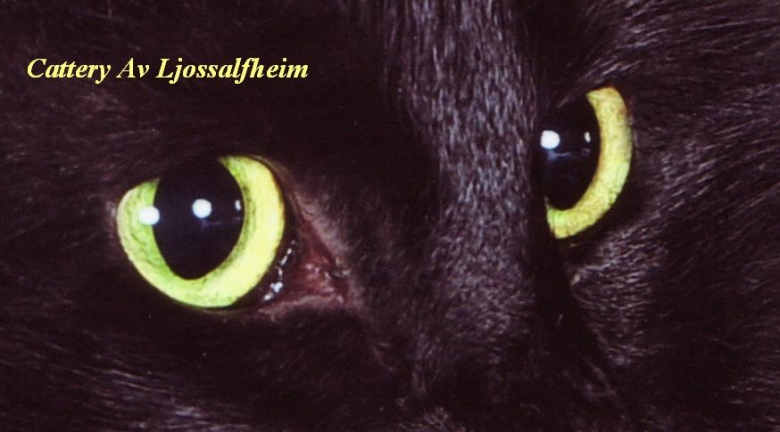
Under Construction
Tests:
De uitslagen van de diverse tests kunt u vinden op de pagina van de desbetreffende kat
You will find the test results at the pages of our cats
Sie werden die Testergebnisse auf den Seiten unserer Katzen finden
Veel informatie over ziektes en erfelijke afwijkingen kunt u vinden bij: 
A lot of information on diseases and genetic abnormalties can be found at:
Viele informationen über Krankheiten und Genetischen Störungen sind zu finden unter:

Common Infectious Diseases we try so hard to avoid:
Feline leukemia (FeLV). This is an immuno-suppressant disease and is recognized as a contagious virus responsible for certain cancers, the two most common being lymphosarcoma and leukemia. The virus is also responsible for several other diseases known as FeLV-related diseases. Noncancerous diseases associated with FeLV infection include anemia, reproductive problems, and secondary infectious diseases.
Feline immunodeficiency virus (FIV). This is a disease of the immune system. The method of transmission for FIV has not yet been determined. Because no vaccine is available, the best method of prevention is to keep your pet indoors and away from strange cats.
Feline infectious peritonitis (FIP). Two types of this disease, which spreads through contact with an infected animal, have been identified. Wet FIP is characterized by chronic weight loss, fever, depression, an enlarged belly and labored breathing. Symptoms of dry FIP include weight loss, chronic and unresponsive fever, depression and inactivity, liver failure, renal insufficiency, pancreatic disease and eye lesions. This disease is usually fatal. No vaccine or cure has been discovered.
Toxoplasmosis. Toxoplasma gondii is a protozoan that lives inside the cells of many humans and animals. Toxoplasma infection is common. By age 19 approximately 30% of people have been exposed to toxoplasma, and as many as two-thirds of the human population are eventually infected. It lives in the body and generally causes no symptoms whatsoever.
Genetic problems on which we test our cats:
BAER (Brainstem Auditory Evoked Response)
Deafness is a trait that can appear in homozygous white cats of all breeds. It also occurs more rarely in cats with "high white" and/or van patterns. Many theories attempt to explain deafness inheritance, but so far no one theory adequately accounts for all incidences. The brainstem auditory evoked response (BAER) test measures responses in brain waves that are stimulated by a clicking sound to check the central auditory (hearing) pathways of the brainstem.
GSD-IV (Glycogen Storage Disease IV)
Glycogen storage disease type IV is an inherited disorder of the Norwegian Forest Cat where an essential enzyme required to produce glucose (energy) is deficient. Afflicted kittens are usually stillborn but may develop normally until 4-5 months of age before suffering terminal neuromuscular degeneration. The disorder is autosomal recessive; both parents must be carriers of the trait in order for offspring to be affected.
HCM (Hypertrophic Cardiomyopathy)
Hypertrophic Cardiomyopathy is a terminal condition where the heart muscle enlarges and thickens progressively over time. It can be a cause of sudden death, and symptoms may be mild or nonexistent. The disease is caused by mutations in several genes and passed down to offspring by autosomal dominant inheritance. Any cat regardless of breed can be afflicted with the disease.
PKD (Polycystic Kidney Disease)
Polycystic kidney disease is an inherited disease where cysts are present on the kidney from birth, progressively destroying the organ and causing terminal renal failure. Ultrasound can detect PKD as early as 10 months of age and is 98% accurate; a DNA test has been developed for cats stemming from Persian/Exotic lines, but the disease has been seen in other breeds and non-pedigreed cats.
PK Deficiency (Pyruvate Kinase Deficiency)
Pyruvate kinase deficiency is an inherited disease where an enzyme in the red blood cells is missing, causing these cells to have a shortened lifespan. Ultimately, the red blood cell count is lowered, causing anemia that is usually mild; however, a rapid, life-threatening anemia can also develop. The disease is autosomal recessive, meaning each parent needs a copy of the defective gene in order for an offspring to be affected. Only tested cats will be posted on this site. Cats who are normal based on the results of their parents will not be listed here.
